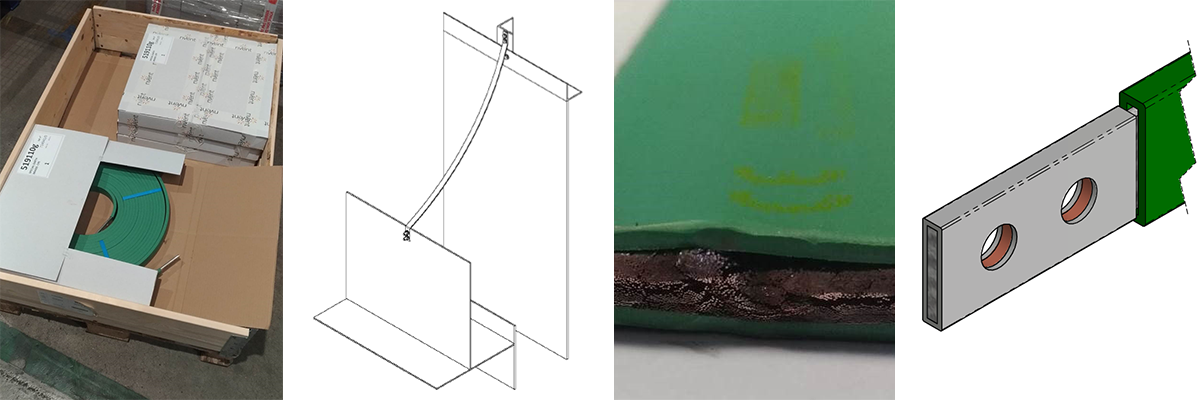When storing dangerous and flammable liquids, like oil and gas, protecting those materials from any source of intense heat or sparks is critical. The combustible nature of fuel, combined with the spark from lightning can be dangerous.
Grounding systems conduct energy from lighting strikes to the ground where it can diffuse safely and protect oil and gas storage tanks. This process also protects people who work at storage facilities and valuable materials from dangerous situations that could result from a lightning strike.
Designing a grounding solution for oil and gas storage tanks is more complicated than designing one for a structure like a commercial building. Oil and gas tanks have floating roofs that rise and fall with the level of the liquid inside the tank. This prevents the buildup of dangerous vapors in the space between the contents of the tank and its roof. When vapors build up, the risk of an electrical current-induced explosion increases. Minimizing the space between the roof of the tank and the contained liquid is critical to ensuring safe storage at all liquid levels.
As tank roofs rise and fall, the cables that connect them to the ground need to remain taut. Over the years, engineers have developed several ways of dealing with this problem. Many solutions employ a Retractable Grounding Assembly (RGA). Think of this like a spool of thread—cables are attached to the floating roof and wound around the RGA fixed on top of the tank. The RGA connects to the rest of the grounding system, which carries electrical currents to the ground.
A New Solution
 CTS Group is a company that provides sustainable and reliable tank storage. Developing effective grounding systems is critical to their products. When CTS heard of failures in its RGA systems, the company learned the mechanism generated friction when it raised and lowered, with the coiling of the cable inside the RGA placing stress on the cables.
CTS Group is a company that provides sustainable and reliable tank storage. Developing effective grounding systems is critical to their products. When CTS heard of failures in its RGA systems, the company learned the mechanism generated friction when it raised and lowered, with the coiling of the cable inside the RGA placing stress on the cables.
While replacing the RGA and grounding cables are inexpensive, the process can be time-consuming. Workers can’t conduct repairs on storage tanks while they are full because of the danger that electrical equipment poses around combustible materials. These safety precautions mean that every time the RGA systems malfunction, CTS must completely empty the affected tanks.
“Emptying the tank to conduct repairs meant that replacing a $200 product could potentially lead to a $1M loss in business,” said nVent ERIFLEX Vertical Marketing Director Julien Brousseau.
Finding the Right Partner
Because of the expertise nVent has in grounding and bonding and lightning and surge protection solutions, CTS partnered with nVent engineers in the Middle East to design a better solution for its storage tank grounding systems.
nVent engineers looked to nVent ERIFLEX earthing braids as a solution. nVent ERIFLEX earthing braids are made of interwoven tinned copper strands, which makes them flexible. The braids also use nVent ERIFLEX Advanced Technology superior cable insulation. This cable is important because it allows the braid to rest safely on metal surfaces. The braids can also be made to order to meet customers’ exact specifications.
To implement a solution for CTS, nVent engineers designed a flat, braided conductor to CTS’ specifications that would mount to its storage tanks. The ends of the braid are integrated connective lugs, so there is no work required to attach the braid to a terminal, like there would be with a cable system.

When the liquid level of the tank rises, the nVent ERIFLEX grounding braid coils up with the rise of the lid. When the level falls, the grounding braid uncoils and maintains the connections to the lid and tank. Because of the nVent ERIFLEX Advanced Technology insulation, the coiled braid can safely rest on the lid of the tank. This eliminates the need for a mechanism to extend or retract the grounding cable.
For safety reasons, the conductor needed yellow-green insulation and to be UV-tested. nVent ERIFLEX Advanced Technology insulation met both requirements. Additionally, the insulation is low smoke, halogen-free and flame retardant (LSHFFR).
nVent has a broad range of product technology and expertise it can use to help customers find solutions to a wide range of requirements. With the customized solution provided by nVent, CTS can now reduce the costly maintenance from past solutions and focus on running their business.


